
| Orange Cup Moth (one synonym : Anapaea trigona Turner, 1942) LIMACODIDAE, ZYGAENOIDEA | (donherbisonevans@yahoo.com) and Stella Crossley |
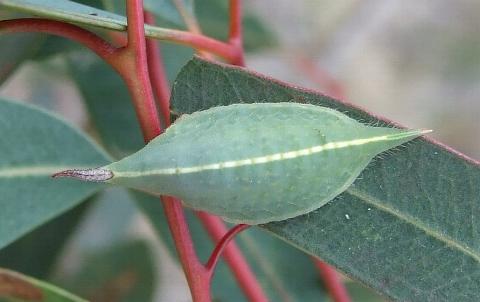
(Photo: courtesy of Wendy Moore, near Coburg, Victoria)

| Orange Cup Moth (one synonym : Anapaea trigona Turner, 1942) LIMACODIDAE, ZYGAENOIDEA | (donherbisonevans@yahoo.com) and Stella Crossley |

(Photo: courtesy of Wendy Moore, near Coburg, Victoria)
This caterpillar is fat in the middle and pointed at both ends. It is green or orange with a pale yellow stripe along the dorsal ridge. Actually the point at the head end is just a shield that it pulls down over its grey head when it feels threatened.
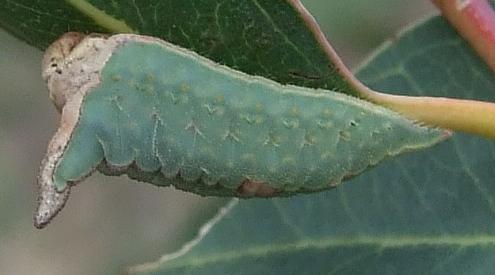
The caterpillar feeds on the foliage of
The caterpillar pupates in a tough oval cocoon stuck on a twig.
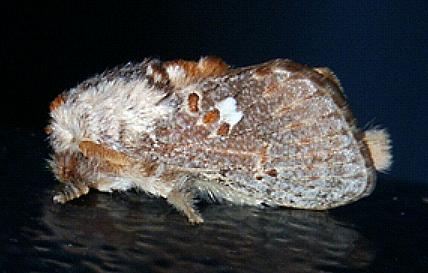
The adult moth has freckly brown forewings, each with three prominent orange spots, two edged with expanded white areas. The hindwings and abdomen are brown, and the thorax is off-white and hairy. The wingspan is about 2.5 cms.
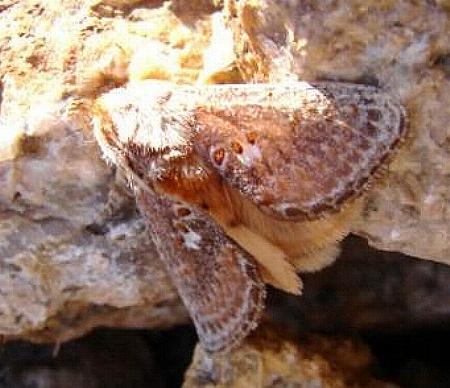
It is thought that Pseudanapaea transvestita is basically a southern species, but sightings have been reported from
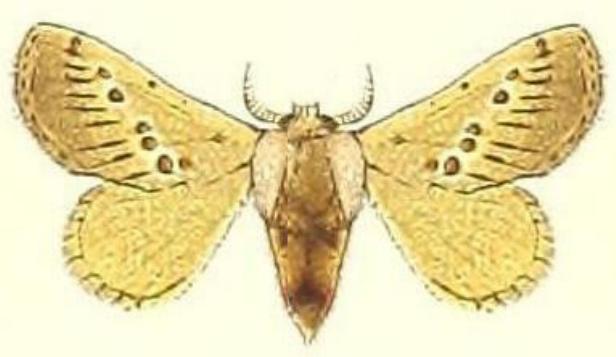
It is possible that the specimens found in eastern Australia north of the Queensland border listed as Pseudanapaea transvestita may be misidentifications of Pseudanapaea denotata, and the ones from Western Australia are possible misidentifications of Pseudanapaea dentifascia, but it is also possible that all these names have been mis-applied to other so-far unnamed species in the genus Pseudanapaea.
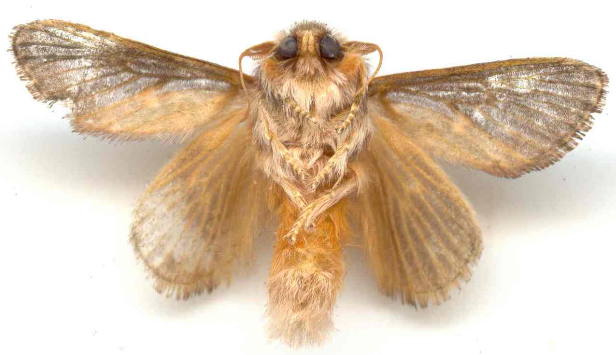
Further reading :
Erich Martin Hering,
Bombyces and Sphinges of the Indo-Australian Region,
in Adalbert Seitz (ed.): The Macrolepidoptera of the World,
Volume 10 (1933), p. 683, and also
Plate 86, Fig. g4.
Peter B. McQuillan, Jan A. Forrest, David Keane, & Roger Grund,
Caterpillars, moths, and their plants of Southern Australia,
Butterfly Conservation South Australia Inc., Adelaide (2019), p. 74.
Buck Richardson,
Tropical Queensland Wildlife from Dusk to Dawn Science and Art,
LeapFrogOz, Kuranda, 2015, p. 106.
 caterpillar |  butterflies |  Lepidoptera |  moths |  caterpillar |
(updated 23 December 2012, 13 May 2025)